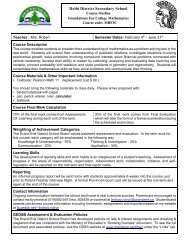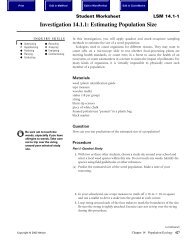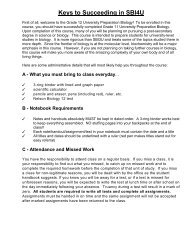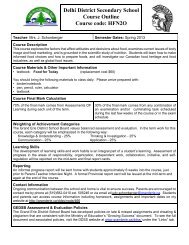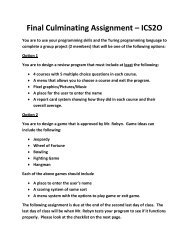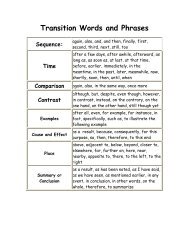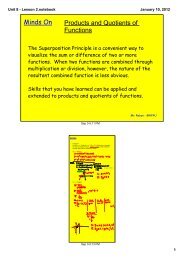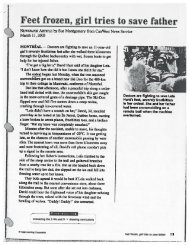Chapter 11.pdf
Chapter 11.pdf
Chapter 11.pdf
- No tags were found...
You also want an ePaper? Increase the reach of your titles
YUMPU automatically turns print PDFs into web optimized ePapers that Google loves.
11.1 CHECK and REFLECTKey Concept Review1. Describe the law of reflection as arelationship between the angle of incidence,the angle of reflection, and the normal.2. Describe the kinds of images that can beformed by plane mirrors.3. (a) What type of mirror produces onlydiverging rays?(b) What type of mirror can produce bothconverging and diverging rays?4. Describe what kind of mirror you would useif you needed to view a large, spread-out areain a small mirror.5. Compare the shapes of convex and concavemirrors. How are they similar, and how dothey differ?6. What kind of images do convex mirrors form?7. What are three uses for convex mirrors?8. A lighted object is placed at the focal point ofa concave mirror. Describe the light raysreflecting off the mirror.Connect Your Understanding13. Use a ray diagram with five rays to show howa car headlight uses a concave mirror to directlight.14. Draw the following ray diagram: three rays,travelling generally left to right, converge10 cm away from a concave mirror and arereflected away from the mirror as parallelrays.15. Draw a ray diagram to determine the positionof an image formed by a concave mirror thathas a focal length of 3.0 cm and a 2.0 cmobject positioned 6.0 cm from the mirror.16. If you can see someone in a mirror, can thatperson see you? Explain why or why not. Usea ray diagram if necessary.17. Draw a view from above of an arrangement ofmirrors that would allow you to see the backof your head. Mark the angles of incidenceand reflection on your diagram.18. Does diffuse reflection, shown below, followthe law of reflection? Explain why it does ordoes not.9. Describe how the positions of a mirror,incident ray, reflected ray, and normal arerelated.10. How does your image in a mirror comparewith looking directly at yourself?11. A bacterium has a length of 5.5 10 –6 m butseen through a powerful microscope appearsto be 1.2 10 –3 m. What is the magnificationof the microscope?12. A virtual image is produced by a convexmirror that is 1.60 cm from the mirror. If themagnification is 0.20, how far from themirror is the object?Question 18Reflection19. (a) Describe one idea you found easy to learnin this section.(b) Why do you think it was easy to learn?(c) Describe one idea you found difficult tounderstand in this section.(d) What did you do to help yourselfunderstand it?For more questions, go to ScienceSource.Ray diagrams model the behaviour of light in mirrors and lenses.433



